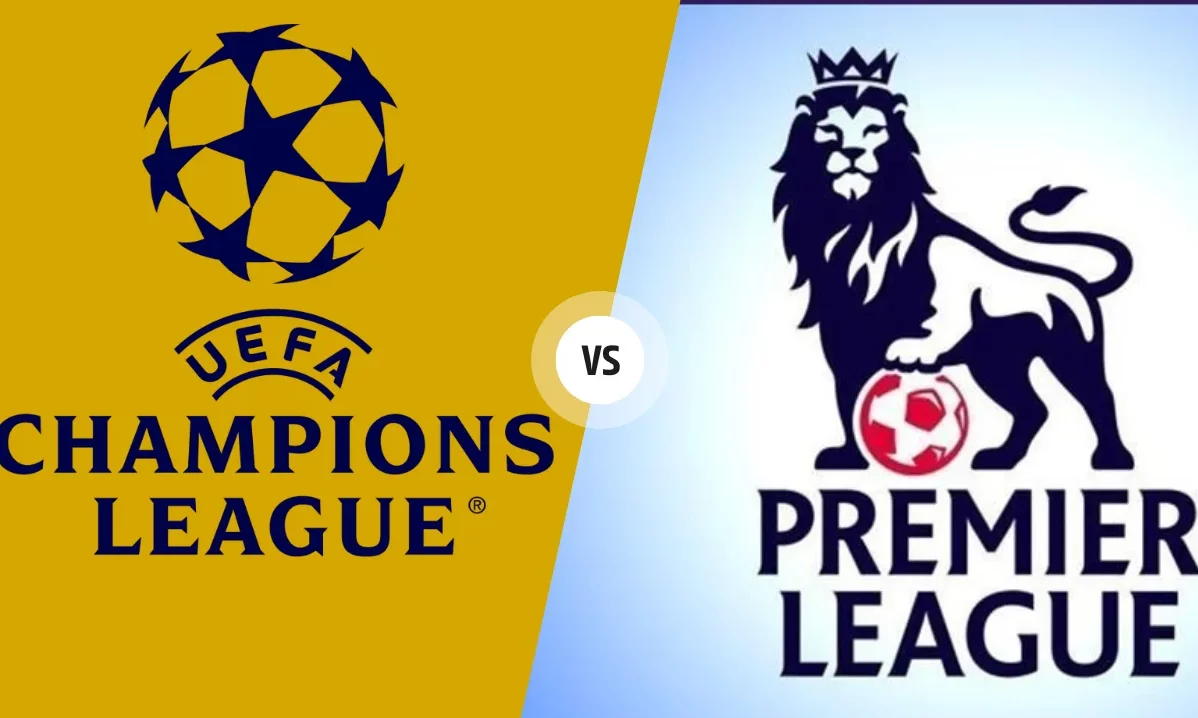Premier League
Distinctions: Premier League vs UCL
Welcome to the ultimate face-off: Premier League vs Champions League! Football fanatics, get ready to dive into a captivating comparative analysis that unravels the key distinctions between these two powerhouses of European football.
Introduction: Explain the popularity and significance of both the Premier League and Champions League in football/soccer.
Football is the most popular sport in the world with a fan base of over 4 billion people globally. The sport has two major annual tournaments that draw in millions of viewers and generate billions of dollars in revenue – the Premier League and Champions League. In this section, we will explore the popularity and significance of both the Premier League and Champions League in detail.
1. The Popularity of Premier League
The Premier League is an English professional league for men’s association football clubs. It was founded in 1992 and has since become one of the most-watched sports leagues globally. The league consists of 20 clubs competing against each other to be crowned as champions at the end of each season.
One of the main reasons for its immense popularity is its competitiveness. The league features some of the world’s best teams such as Manchester United, Liverpool, Chelsea, Arsenal, Manchester City, Tottenham Hotspur, among others. These teams have a rich history and have consistently performed well on both domestic and international platforms.

Moreover, the Premier League also boasts top-quality players from all over the globe who bring their unique playing styles to their respective teams. This diversity adds to its appeal as it attracts a wide range of fans from different countries.
2. The Significance of Champions League
The UEFA Champions League, often referred to as the ‘UCL,’ is an annual continental club football competition organized by the Union of European Football Associations (UEFA). It was established in 1955 and has since become the most prestigious and coveted club competition in Europe.
One of the main reasons for its significance is the level of competition it offers. The tournament features the top clubs from Europe’s domestic leagues, including England, Spain, Italy, Germany, and more. These teams have won multiple championships and have some of the most loyal fan bases in their respective countries.
Additionally, the Champions League allows for cross-country rivalries and matchups that are not possible in domestic leagues. This adds to its appeal as fans get to see their favorite teams compete against other powerhouse clubs from different countries.
History of the Premier League and Champions League: Briefly discuss the origins, evolution, and format of both leagues.
The Premier League and Champions League are competitions feature some of the best teams and players, attracting a huge global audience. However, despite their similarities, there are significant differences between these two leagues which make them unique in their own ways.
To fully understand the key distinctions between the Premier League and Champions League, it is important to take a closer look at their histories – how they began, evolved over time, and what format they follow.

1. Premier League History
The Premier League was founded in 1992 as a breakaway from the Football League First Division. This new league was created with the aim of commercializing English football and making it more appealing to television audiences. The first season of the Premier League consisted of 22 clubs that were previously part of the old First Division.
Since its inception, the Premier League has undergone several changes and developments. In 1995, it expanded to include 20 teams (a number which has remained constant till date). It also introduced a system of promotion and relegation with lower divisions. It means that teams at the bottom of the Premier League get demoted while top-performing teams from lower divisions get promoted.
In 2007, financial fair play regulations were introduced to ensure clubs operate within their financial means. This helped create more competition amongst teams as well as maintain financial stability within English football.
2. Champions League History
The Champions League, originally known as the European Cup, was founded in 1955 by French sports journalist Gabriel Hanot. The idea was to create a competition where the best teams from different European countries could compete against each other and determine the best team in Europe.
At first, only domestic champions from each country were allowed to participate in the tournament. However, in 1997, the format was changed to include multiple teams from each country based on their performance in their respective leagues. This change made the competition more competitive and allowed for a wider representation of clubs from various European countries.
In 1992, the tournament was renamed as the Champions League and has since become one of the most prestigious club competitions in world football.

3. Format
The Premier League follows a round-robin format where all 20 teams play each other twice (home and away) over the course of a season. Each team plays a total of 38 games, with three points awarded for a win and one point for a draw. At the end of the season, the team with the highest number of points is declared as the league winner.
On the other hand, the Champions League follows a two-stage format – group stage and knockout stage. In the group stage , 32 teams are divided into eight groups of four teams and play each other in a round-robin format. The top two teams from each group then progress to the knockout stage, where they compete in a two-legged knockout format until the final.
Team Composition: Compare the number of teams, qualifying process, and diversity in teams for each league.
Team Composition is a crucial aspect of any sports league, as it determines the level of competition and excitement for fans. In this section, we will take an in-depth look at the differences between the Premier League and the Champions League in terms of team composition – the number of teams, qualifying process, and diversity in teams for each league.
1. Number of Teams
The Premier League is composed of 20 teams, while the Champions League has a total of 32 teams. This is one major difference between the two leagues that sets them apart. The higher number of teams in the Champions League means that there are more matches to be played, resulting in a longer and more grueling season for participating clubs.
2. Qualifying Process
The qualifying process for both leagues also differs significantly. In the Premier League, all 20 teams automatically qualify based on their performance in the previous season. However, in the Champions League, only a certain number of spots are guaranteed to top-performing clubs from Europe’s major leagues such as England’s Premier League, Spain’s La Liga, Italy’s Serie A, Germany’s Bundesliga, and France’s Ligue 1.
This makes it more difficult for smaller or less successful clubs to secure a spot in the Champions League. Moreover, there is also an additional qualifying round where lower-ranked clubs must play against each other to secure their place among Europe’s elite.

3. Diversity in Teams
One significant difference between these two leagues lies in their diversity when it comes to team composition. The Premier League is known for its global appeal, with teams consisting of players from all over the world. On the other hand, the Champions League has stricter rules regarding the number of non-European players that can be included in a team’s squad.
This means that teams in the Champions League tend to have a higher percentage of European players compared to those in the Premier League. However, with the increasing globalization of football and relaxed regulations, this gap is slowly closing.
4. Conclusion
While both leagues offer top-level competition, there are significant differences in team composition between the Premier League and the Champions League.
The Premier League has a smaller number of teams with a simpler qualifying process and more diverse teams. The Champions League has a larger number of clubs with a more complex qualifying process and slightly less diversity. Ultimately, these differences add to the unique charm and appeal of each league for fans all around the world.
Competition Format: Highlight the differences in group stages, knockout rounds, and away goals rule between Premier League and Champions League.
The Premier League and the Champions League are two of the most prestigious football tournaments in Europe. While both competitions showcase top teams from various countries, there are significant differences in their competition formats. In this section, we will explore the key distinctions between the Premier League and Champions League in terms of group stages, knockout rounds, and the away goals rule.
1. Group Stages
One of the major differences between these two tournaments is their group stage format. The Premier League does not have a group stage; instead, it follows a round-robin format where each team plays against all other teams twice – once at home and once away. This means that every team has an equal chance to compete against each other for points throughout the season.
On the other hand, the Champions League has a more complex group stage format. Teams are divided into groups based on factors like rankings, league standings, and past European performances. Each group consists of four teams that play against each other twice – once at home and once away. Top two teams from each group move on, third-placed teams compete in Europa League.

2. Knockout Rounds
The knockout rounds determine which team ultimately wins both tournaments. In the Premier League, there is no traditional knockout phase; instead, teams accumulate points throughout 38 matches played over a period of nine months. The team with the most points at the end of the season is declared the winner.
In contrast, the Champions League has a knockout format that starts after the group stage. The top two teams from each group enter into a round of 16, followed by quarter-finals, semi-finals, and ultimately the final.
3. Away Goals Rule
The away goals rule is another major difference between these two tournaments. In the Premier League, there is no away goals rule. Instead, in case of a tie on points, goal difference and goals scored are used to determine the winner.
However, in Champions League knockout rounds, if both teams score an equal number of goals over two legs, then the team that scores more goals away from home advances to the next round. This rule promotes strong away performances and adds excitement to knockout matches.
In conclusion, while both Premier League and Champions League showcase top football clubs and players in Europe, their competition formats differ significantly.
Prize Money: Discuss how much teams
Major football tournaments like the Premier League and Champions League offer substantial prize money to participating teams. However, there are some key differences in the amount of prize money that teams can earn in these two competitions.
1. Premier League Prize Money
The Premier League is known for being one of the most lucrative leagues in the world, with clubs earning millions from television rights, sponsorships, and ticket sales. The total prize money for the Premier League is divided into three categories – merit payments, facility fees, and equal share.
Merit payments are awarded based on a team’s final position in the league table. The higher a team finishes, the more they will receive in merit payments. For example, in 2020-2021 season, Manchester City received £38 million as champions while bottom-placed Sheffield United received £2 million.
Facility fees are paid to clubs depending on how often their matches are broadcasted on television. This encourages teams to perform well and attract viewership. In addition to this, each club receives an equal share of TV revenue which amounts to around £84 million per season.

In terms of overall prize money distribution for Premier League clubs, it has been estimated that even bottom-placed teams earn approximately £100 million per season. This highlights the financial stability provided by this competition compared to other European leagues.
2. Champions League Prize Money
The UEFA Champions League is Europe’s most prestigious club competition and offers even bigger financial rewards than the Premier League. The total prize money for the Champions League is divided into four categories – participation, performance, TV pool, and coefficient ranking.
Participation fee is awarded to each team simply for qualifying for the group stages of the tournament. This amount is fixed at €15.25 million for all teams.
Performance bonuses are paid based on a team’s results in each stage of the competition. For example, a win in the group stage earns a team €2.7 million while winning the final can result in an additional €4 million.
TV pool money is distributed among clubs based on their respective national TV markets. This means that clubs from bigger and more lucrative leagues will receive a larger share of this pot.
Coefficient ranking refers to each club’s past performances in European competitions over a five-year period. This determines how much they will receive from the overall prize money distribution.
In total, it has been estimated that winning the Champions League could earn a club approximately €100 million in prize money. However, even eliminated clubs receive significant amounts – around €15 million – which highlights the financial benefits of participating in this competition.
Overall, while both competitions offer substantial prize money to participating teams, it can be argued that the Premier League provides more stability and consistent earnings for clubs, while the Champions League offers larger sums of money but with a higher level of uncertainty.
Conclusion
While both the Premier League and Champions League have distinct differences that set them apart. The Premier League is a domestic league with teams competing for the title within their own country, while the Champions League brings together top clubs from different countries to compete for a prestigious international trophy. Both competitions offer thrilling matches and unforgettable moments for fans worldwide.
FAQs
Yes, the Premier League is one of the top-ranked football leagues in Europe and its top teams compete in the UEFA Champions League.
The Premier League is the top division of English football and is highly regarded for its competitiveness and top teams. The UEFA Champions League is an annual competition that brings together top European teams. While both have their own significance, they cannot be compared as one being bigger than the other.
As the name suggests, Premier League is considered the top-flight of English football and is widely recognized as one of the most competitive and prestigious leagues in the world. However, there are technically higher leagues such as the UEFA Champions League, which includes top-performing clubs from different European leagues.





